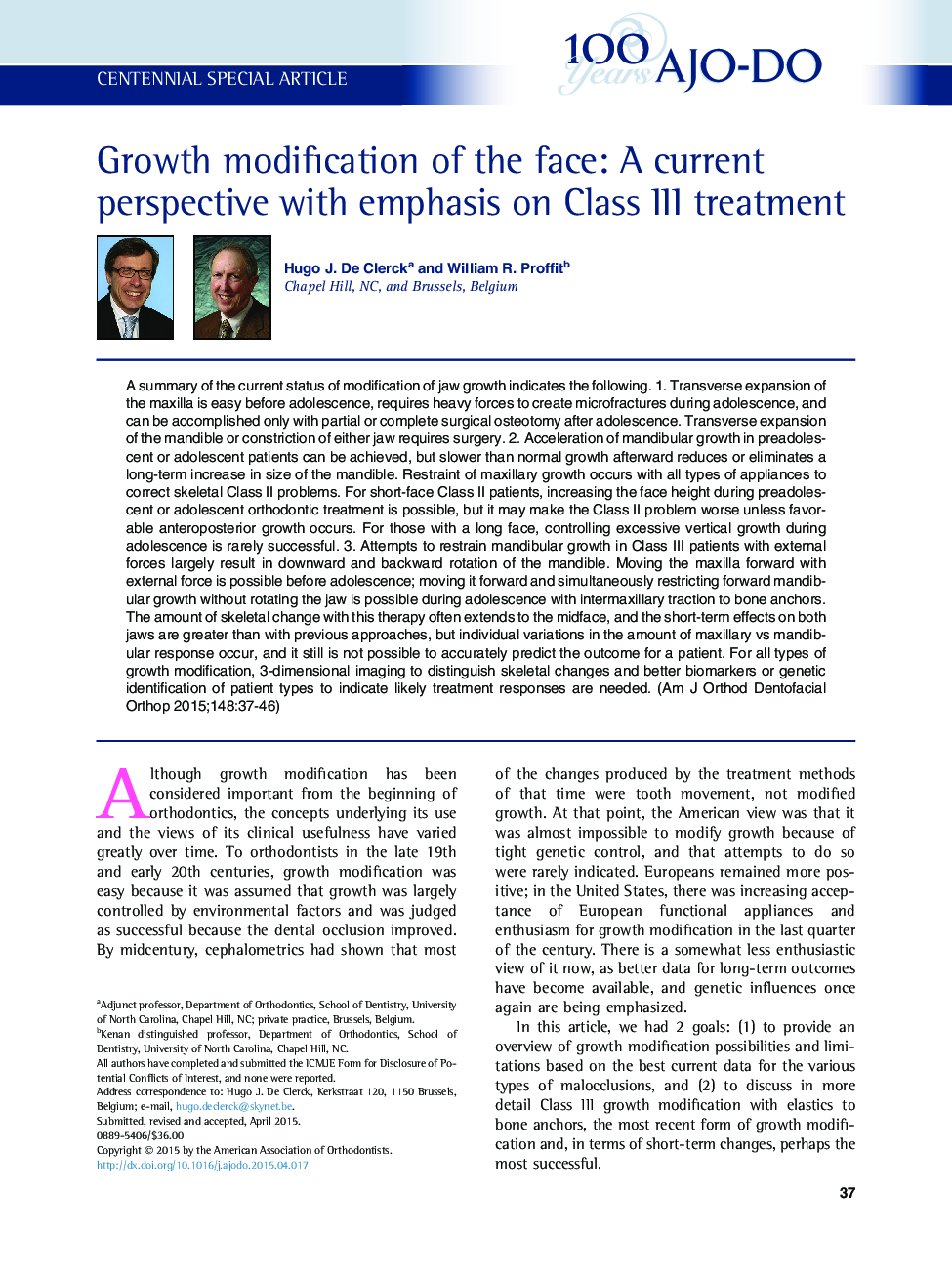| کد مقاله | کد نشریه | سال انتشار | مقاله انگلیسی | نسخه تمام متن |
|---|---|---|---|---|
| 3115333 | 1582686 | 2015 | 10 صفحه PDF | دانلود رایگان |

• Many have attempted to change proportional relationships during skeletal growth.
• Successful treatment would limit unwanted dental compensations.
• Changes of a few millimeters have been possible in growing Class III patients.
• Miniplate anchorage combined with light forces has produced promising results.
• Biomarkers are needed to predict outcomes and define indications for use.
A summary of the current status of modification of jaw growth indicates the following. 1. Transverse expansion of the maxilla is easy before adolescence, requires heavy forces to create microfractures during adolescence, and can be accomplished only with partial or complete surgical osteotomy after adolescence. Transverse expansion of the mandible or constriction of either jaw requires surgery. 2. Acceleration of mandibular growth in preadolescent or adolescent patients can be achieved, but slower than normal growth afterward reduces or eliminates a long-term increase in size of the mandible. Restraint of maxillary growth occurs with all types of appliances to correct skeletal Class II problems. For short-face Class II patients, increasing the face height during preadolescent or adolescent orthodontic treatment is possible, but it may make the Class II problem worse unless favorable anteroposterior growth occurs. For those with a long face, controlling excessive vertical growth during adolescence is rarely successful. 3. Attempts to restrain mandibular growth in Class III patients with external forces largely result in downward and backward rotation of the mandible. Moving the maxilla forward with external force is possible before adolescence; moving it forward and simultaneously restricting forward mandibular growth without rotating the jaw is possible during adolescence with intermaxillary traction to bone anchors. The amount of skeletal change with this therapy often extends to the midface, and the short-term effects on both jaws are greater than with previous approaches, but individual variations in the amount of maxillary vs mandibular response occur, and it still is not possible to accurately predict the outcome for a patient. For all types of growth modification, 3-dimensional imaging to distinguish skeletal changes and better biomarkers or genetic identification of patient types to indicate likely treatment responses are needed.
Journal: American Journal of Orthodontics and Dentofacial Orthopedics - Volume 148, Issue 1, July 2015, Pages 37–46